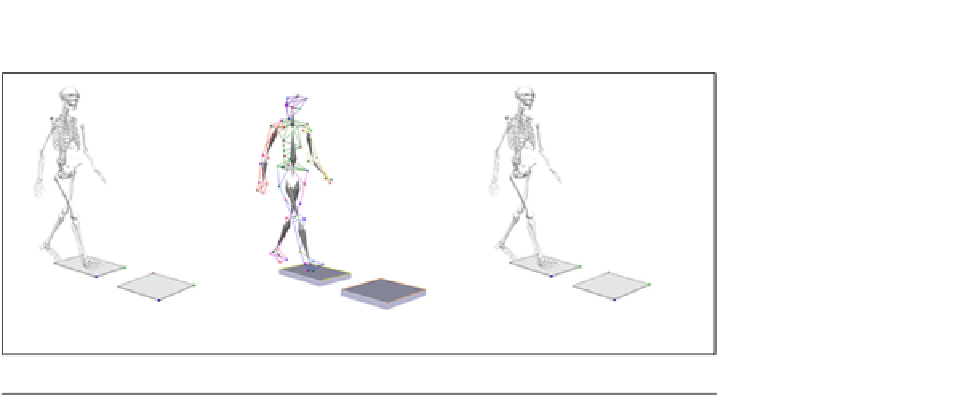Biomedical Engineering Reference
In-Depth Information
FIGURE 9.6
A picture of a subject's skeleton motion capture during walking, and the ground force
plates.
9.5.2
Walking determinants
Based on the literature and a fair understanding of human gait, six determinants
were chosen to characterize walking (
Saunders et al., 1953
). These walking deter-
minants (WD) represent major DOF, or a combination of DOF, that play consid-
erable roles in the walking process. Walking determinants consist of the lower
extremities and the pelvic motion of the human, and include hip flexion/extension,
knee flexion/extension, ankle plantar/dorsiflexion, pelvic tilt, pelvic rotation, and
lateral pelvic displacement. With the exception of lateral pelvic displacement, each
of the gait determinants is the time history of a joint angle. Pelvic motion, which
includes pelvic tilt, pelvic rotation, and lateral pelvic displacement, is not consis-
tently identified in the literature; however, it will be included in this work because
of its significant involvement in normal human walking.
9.5.3
Participants
Nine healthy males and one healthy female were used for the validation of normal
walking. The subjects had no history of musculoskeletal problems and were rea-
sonably fit. Their participation was voluntary, and a written informed consent, as
approved by the University of Iowa Institutional Review Board, was obtained
prior to testing. The height of the subject population was 176
7 cm, the weight
6
was 67
7 kg, and the age was 27
7 years.
6
6
9.5.4
Results
9.5.4.1
Qualitative comparison
For the first benchmark (
Figure 9.5
), 13 participants were used to evaluate five
videos of animated avatars. Four avatars were animated using experimental data,


Search WWH ::

Custom Search